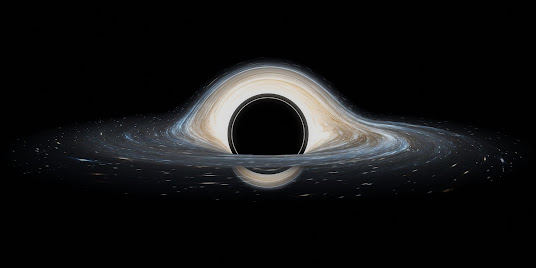How Far is Mars from Earth?
Mars, often called the Red Planet, has captivated human imagination for centuries. Its striking red color, due to iron oxide (rust) on its surface, and its potential for past or present life make it one of the most intriguing objects in our solar system. One common question people ask is: "How far is Mars from Earth?" The answer is not straightforward because the distance between Mars and Earth varies continuously due to their elliptical orbits around the Sun.
How Far is Mars from Earth?
The Dance of Orbits
Both Mars and Earth orbit the Sun, but they do so at different distances and speeds. Earth is the third planet from the Sun, averaging about 93 million miles (150 million kilometers) from it, while Mars is the fourth planet, averaging 142 million miles (228 million kilometers) from the Sun. However, both planets have elliptical orbits, meaning their distances from the Sun—and each other—change as they travel along their paths.
The closest approach of Mars to Earth occurs about every 26 months during a phenomenon known as "opposition." Opposition happens when Mars and the Sun are on directly opposite sides of Earth. During opposition, Mars can come as close as approximately 34 million miles (55 million kilometers) to Earth. Conversely, when Mars and Earth are on opposite sides of the Sun, known as "conjunction," they can be as far as 250 million miles (400 million kilometers) apart.
Average Distance
The average distance between Earth and Mars is about 140 million miles (225 million kilometers). This average is derived from the combination of their closest approach and their most distant positions. While this average gives a general sense of the separation between the two planets, it's essential to remember that the actual distance can vary significantly depending on their positions in their respective orbits.
Speed of Travel
When considering the distance to Mars, it's also important to think about travel time. Space agencies and Spacecraft traveling to Mars must follow a curved trajectory to account for the planets' movements. This means that the distance a spacecraft travels is greater than the straight-line distance between the two planets.
Spacecraft typically take between six and nine months to travel from Earth to Mars. The exact time depends on the specific launch window, the trajectory chosen, and the type of propulsion used. The launch window, which occurs approximately every 26 months, is the period when Earth and Mars are optimally aligned to minimize travel time and fuel consumption.
Historical Context
Human fascination with Mars dates back to ancient times when early astronomers observed its retrograde motion—an apparent reversal in its path across the night sky. This puzzling behavior contributed to the development of heliocentric models of the solar system, with Mars playing a critical role in refining our understanding of planetary motion.
In the modern era, the space race brought Mars closer to our reach. The Mariner 4 mission in 1965 provided the first close-up images of Mars, revealing a barren, cratered landscape. Since then, numerous missions from NASA, ESA, and other space agencies have explored Mars, enhancing our understanding of its geology, climate, and potential for life.
The Role of Distance in Exploration
The vast distance between Earth and Mars presents significant challenges for exploration. Communication delays, due to the finite speed of light, mean that signals can take anywhere from 4 to 24 minutes to travel one way between the two planets, depending on their relative positions. This delay complicates real-time control of robotic missions and requires autonomous systems capable of making decisions without immediate human input.
Furthermore, the long travel time exposes astronauts to prolonged periods in space, raising concerns about the effects of microgravity, radiation exposure, and the psychological impacts of isolation. As a result, space agencies are developing advanced life support systems, radiation shielding, and strategies to maintain the health and well-being of future Mars explorers.
The Future of Mars Exploration
Despite the challenges, Mars remains a primary target for future exploration. NASA's Artemis program aims to return humans to the Moon as a stepping stone for missions to Mars. The lessons learned from lunar exploration will be critical in preparing for the longer journey to the Red Planet.
Private companies like SpaceX are also playing a significant role in Mars exploration. SpaceX's Starship spacecraft, designed for deep-space missions, aims to reduce the cost and increase the frequency of trips to Mars. Elon Musk, the founder of SpaceX, envisions a future where Mars is colonized, providing a backup for humanity in case of catastrophic events on Earth.
International collaborations are also crucial in the quest to reach Mars. The Mars Sample Return mission, a joint effort between NASA and the European Space Agency (ESA), aims to bring Martian soil and rock samples back to Earth for detailed analysis. This mission will provide invaluable insights into Mars' geology and potential for life, paving the way for human missions.
The distance between Earth and Mars is a dynamic and complex aspect of our solar system's mechanics. It varies significantly due to the elliptical orbits of both planets, ranging from about 34 million miles (55 million kilometers) at closest approach to 250 million miles (400 million kilometers) at their farthest. This vast distance poses substantial challenges for exploration, including communication delays, long travel times, and the need for advanced life support systems.
Despite these challenges, Mars continues to captivate our imagination and drive our efforts to explore beyond our home planet. With advancements in technology, international collaboration, and the determination of space agencies and private companies, the dream of reaching Mars is becoming increasingly feasible.








Comments
Post a Comment